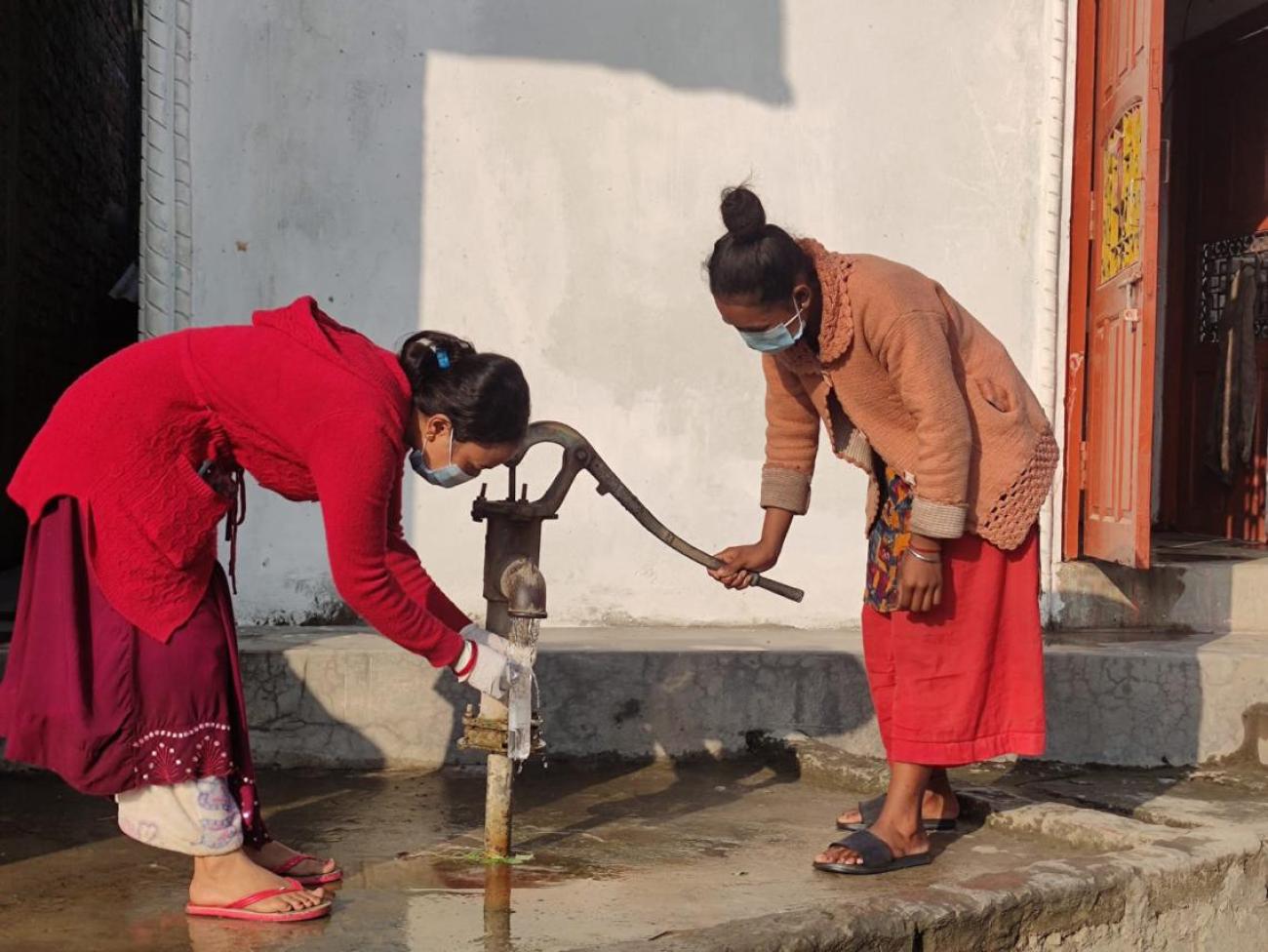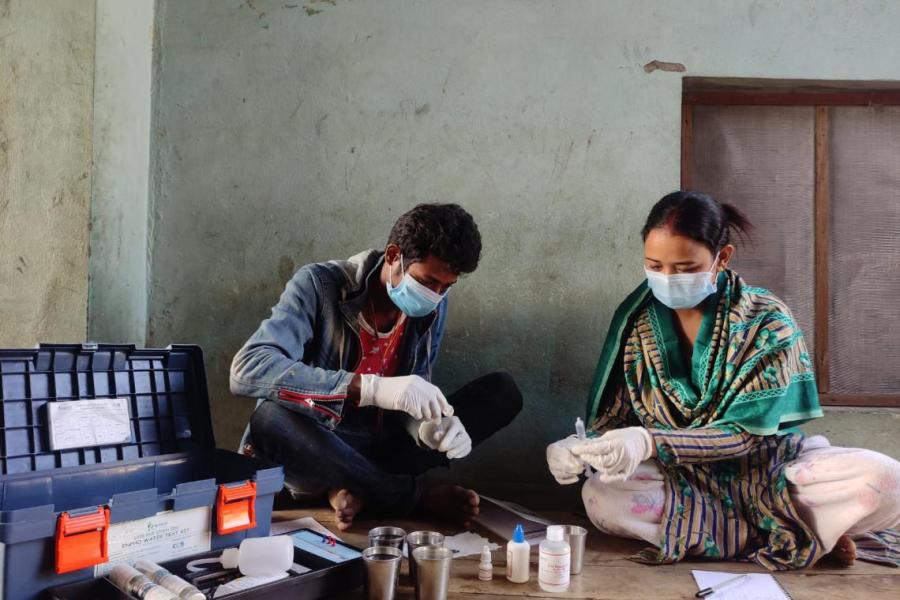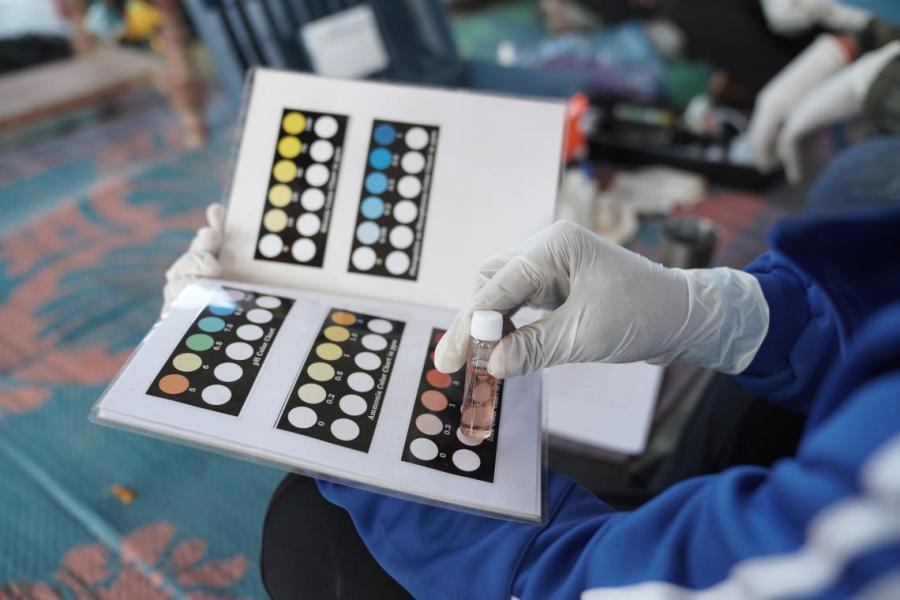Safe water in every home

Locals are proving better equipped to keep waterborne diseases at bay with UNICEF-supported initiative to ensure access to safe, drinking water supply.
Kapilvastu, Nepal: At a time when several areas in Kapilvastu District in western Nepal were reeling from an outbreak of cholera that started in the first week of October 2021, the locals of a small village – despite living in close proximity to the hotspot – were able to prevent it from spreading in their community.
This was Madarhawa, located in the Shivaraj Municipality, and the reason people here succeeded in fending off the disease?
“We were consuming clean, safe water,” says Ambika Tharu. “That’s our biggest accomplishment.”
Indeed, Ambika has been part of a wave of change that has swept through this community over the past year or so. This change has to do with water, sanitation and hygiene or WASH facilities, the restoration and revamping of which has altered lives here.

Ambika recalls how, for a long time, proper water supply had felt like a distant dream. For the 72 households in Madarhawa, handpumps had long been the only source of water. But even though there existed a Water and Sanitation Users’ Committee or WSUC, of which she was a member, the WASH situation left a lot to be desired, Ambika says.
“The handpumps were not well maintained. They didn’t have proper platforms… they were not clean,” she says.
In fact, these were among a range of issues that were identified through a preliminary assessment conducted in the community in late 2020. This formed part of efforts to improve the WASH situation in Madarhawa undertaken by the Shivaraj Municipality in coordination with UNICEF and COSDER, Gorkha.
The assessment – which comprised interactions with community members and key stakeholders to understand perceptions and practices related to WASH – also extended to spot-check examination of handpumps and latrines, and observation of water collection, storage and wastewater management practices.

When water samples were taken from randomly selected handpumps and household storage vessels to be tested – the results showed high level of contamination in terms of E.Coli.
Based on these findings, various activities were planned for following months under the programme. On one hand were the structural improvements, which included ensuring all households were connected to water supply, that these had proper platforms constructed around them, as well as better drainage systems for collecting and managing wastewater.

The existing WSUC was also reinvigorated, with members engaged in workshops to develop a Water Safety Plan that would help to guide the community’s efforts and the sustainability of the interventions going forward. In addition to this, the WSUC members also learned to test water quality for E.Coli, arsenic, free residual chlorine, iron and other parameters using ENPHO kits, and then to carry out chlorination. Households were provided bleaching powder to treat their water supply.
Thanks to these interventions, and with all households boasting access to safe, drinking water, Madarhawa was officially declared a water-safe community in early 2021, joining a growing number of communities across the country that have received this distinction. The concept of water safe communities is an initiative that UNICEF has been supporting the Government of Nepal to pilot across the country in response to the increasing concerns over water quality.

Ambika couldn’t be more pleased with her community’s achievements and for the various skills she herself has gained in the process, to be able to now contribute to the safety of the water in her own homestead.
“This has brought a lot of positive changes in our community and we’re very happy to see this.”

